I decided to share my friend Linda from Random Harvest Farm and Nursery , newsletter with you all, she writes such interesting news with lovely photos to boost and I just know you will enjoy reading her news from the farm. She is so very enthusiastic about what she does and I love her dearly, my favourite threat is to go visit for the day.
Love to all
Marianne

We have all survived 2012 and the end of the world and now look forward to 2013. I wish you all the best and may all your dreams come true and you live a peaceful and happy life.
Plants
 |
 |
When visiting Random Harvest look out for the Peltophorum africanum (Weeping Wattle) and the Bauhinia galpinii (Pride of de Kaap) on the left as you drive down the road. They are putting on a wonderful show with yellow and terracotta flowers. |
 |
The veld is also looking really great with all the grasses coming into seed.
Walking in a grassland is really beautiful and interesting, with things to make
you wonder at the beauty of this planet with each step you take. The grasslands are such an incredibly rich habitat with their diversity of plants and wildlife that it could take you hours to cover 10m. |
I know early in the season the variety of grasses in stock was limited but we have remedied that and now have a good selection.
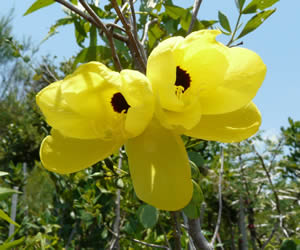 |
The Bauhinia tomentosa are coming into bloom and look lovely. This
is an underutilised plant in gardens which is a shame as it is a beautiful shrub
that can grow quite untidily but if you take the time to prune it into shape
twice a year it is a really rewarding, long flowering shrub for the garden. It can be used as a backdrop or even as a more formal hedge. The added bonus is that it is a host plant to butterflies and moths making it as useful as it is beautiful in a biodiversity garden. We have stock of 4 Litre and 20 Litre plants. |
|
I must say all the Bauhinias are looking good. One of my all time favourites is Bauhinia natalensis. I just love their pure white flowers with maroon nectar guides to encourage insects to pollinate them. Another good addition to a wildlife garden. This plant makes a wonderful delicate hedge. |
 |
If you are ever driving near Strydom Tunnel on the way to the bushveld in autumn look at the hills around you and you will see the beautiful red and pink colours of the Mountain Syringa adorning the hillsides.
The silvery-leaved Gazania uniflora Pink are also looking lovely. Remove the dead flowers regularly and you will be rewarded with flowers all year round.
Another long flowering perennial is Scabiosa columbaria (Purple Scabiosa). The plants in the nursery are a dance floor for the butterflies. There are so many of these winged beauties that their fluttering amongst the flowers which sway gently in the breeze makes for an incredibly beautiful duet.
Amaryllis worms
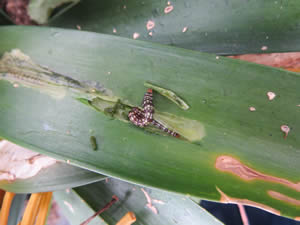 |
Amaryllis worms (or Lily Borer) are enjoying our wet summer and have come out
in force. These disgusting black and yellow caterpillars that cause so much damage are the larvae of a very insignificant dark moth which is indigenous. The population has exploded because we have changed the environment so much. Gardens are moist and densely planted, which creates a perfect habitat for these unwelcome creatures. |
If you have just a few plants of the Crinum (which they will eat but not kill) Clivia, Agapanthus, Nerine etc then it may be possible to remove eggs just by rubbing them off. You will find the clusters of off-white eggs under the broadest leaves.
If you have too many plants to do this, we suggest using an organic pesticide such as Biogrow "Pyrol" with this you actually have to spray the pest to kill it as it has no residual effect on the plants. One of the best solutions is Margaret Roberts "Biological Caterpillar Insecticide" mixed with Ludwig's "Spray Stay".
This is a bacteria that when eaten prohibits digestion of food, resulting in the starvation and death of the Amaryllis worm. It is important to use the "Spray Stay" to stick the insecticide to the leaves. Do this every 2 weeks and you should be in reasonable control.
Another thing you can do is use Crinum moorei, which is the favourite food of the larvae, as bait and then spray the worms. The plant will look ugly but it makes control a whole lot easier.
Good Luck - this and Citrus psylla are the pests I battle with most in the nursery.
Tea Garden
Frans and Yolam have made the most delicious savoury cheesecake you have ever tasted! With a fruity side salad, this is a sublime light lunch-time treat. It will be available at the tea garden from Saturday the 5th of January.
New Year's Resolutions
I thought of some new year's resolutions that will help you connect to nature and enjoy your garden even more.
" Plant only indigenous plants
" Spend more time in the garden, observing and contemplating
" Think about creating habitat and inviting creatures to share your wildlife garden.
" Start a visitor's book for your garden - make a list of all the creatures you see in your garden, where and when you saw them and what they were doing. Embrace your garden with all your senses
" Walk barefoot on your lawn - experience the earth from your toes up.
" Plant and use fresh herbs from your garden
Christmas 2012 activities at Random Harvest
 |
From the 8th to the 19th of December we had wonderful fun at the nursery. Thanks to all those who attended our Christmas activities… we hope you had as good a time as we did. It was great to get the positive feedback, as we always value your input to make things even better next time.Here are a few pictures of what we got up to. A fascinating morning with Geoff Lockwood, looking at how to identify birds. |
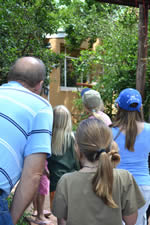 |
Creating Christmas decorations from mostly natural and recycled items.
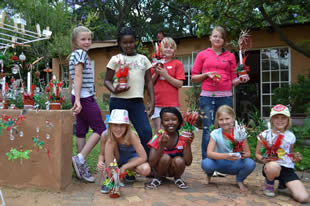 |
Garden Safaris - all proved very popular. It is amazing what one can discover when you take a closer look at the garden. As you can see from the pictures the children were totally fascinated. |
 |
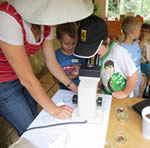 |
The toddlers love looking under rocks but especially
loved the mud which was part of the sensory walk we made for them.
Mixed media frames for adults and
mosaicking for children. From the 10th of January we will have some information on how to make some of the lovely decorations, cards and gift-wrap that we created at our workshops. Please remember to check our website from time to time - 2013 will see a number of events that are sure to enhance the exciting year ahead of us. The bird walk with Andre Marx was, once again, an amazing morning - sighting 60 bird species in just 2 hours. Aren't I lucky to live here? |
 |
 | |
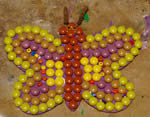 |
 |
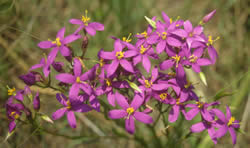 |
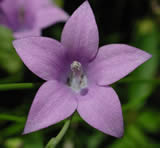 |
The grassland on the way to the dam is looking marvellous. Chironia purpurescens and Walenbergia caledonica which first appeared 2 years ago are now growing in patches all over the place |
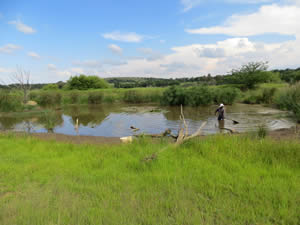 |
The dam was full of Azolla filiculoides that tiny little alien water fern
that turns red. I hate this invader especially as it sucks the life out of the dam. My solution was, on the hot days, to have Mongezi wading into the water to remove it. This does seem to be a bit fruitless as it grows so quickly. |
They no longer have any of these bugs as they were so successful.
I tried to be patient and not remove the Azolla in case there were some bugs on it but the dam was so covered I just had to remove it.
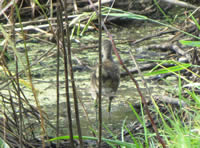 |
This is the best picture we have been able to get of the baby Moorhens (not very good) but I am just happy they survived. |  |
The farm geese have had so many babies that we are overrun. This picture is just a portion of the flock.
If you know anyone who would like some geese let them give me a call and they can happily have some.
 |
What a great addition to a biodiversity garden is this Combretum padoides (Thicket Bushwillow). As you can see from the pictures there is a stinkbug and a bee on just a few flowers. The plant was literally humming with life which just adds to the beauty. We must be doing something right. How beautiful is this little Red-lipped Herald? He was in amongst the seed trays doing his duty keeping the seedlings pest free. I just love it! |  |
Sincerely
Linda
A very interesting blog Marianne and no wonder you love to visit there.
ReplyDeleteThank you for sharing.
I love this share Marianne.
ReplyDeleteWow how interesting to read about all those plants from this Nursery in South Africa.
I would love you to share more of this Nursery from time to time as it will be interesting to read about the different plants for the different seasons.
I loved reading about the farm and all that they have or had there.
The photos are fantastic and all in all this post was very informative.
Thanks so much for sharing and please thank your friend for allowing you to share.
I would head to this place regularly too!!!